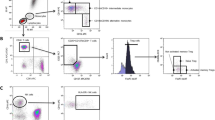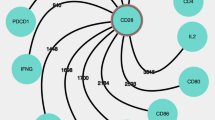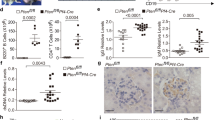Abstract
ABSTRACT: We have studied an 8-yr-old male patient with adenosine deaminase-positive severe combined immunodeficiency disease with a normal number of peripheral CD3+, T cell receptor-αβ+ T cells. The majority of these T cells expressed the CD8 molecule and were oligoclonal in nature as proven by Southern blot analysis of the T cell receptor genes. T cells failed to proliferate in vitro either upon stimulation with T cell mitogens or when stimulated with a combination of the phorbol ester phorbol myristate acetate and the Ca-ionophore ionomycin. High doses of recombinant IL-2, when added to in vitro cultures, were able to restore proliferation induced by phorbol myristate acetate and ionomycin but the response to concanavalin A remained severely defective. However, activation of the patient's T cells with phytohemagglutinin or concanavalin A induced an increase of free cytoplasmic Ca++, which was 2− to 5-fold higher than in normal CD8+ T cells. Furthermore, phorbol myristate acetate or phytohemagglutinin induced the translocation of protein kinase C from cytosol to plasma membrane. Analysis of membrane phospholipid composition of the patient's T cells disclosed that the ratio of phosphatidylcholine to phosphatidylserine was 5-fold higher than in normal T cells. The abnormal Ca++ response after activation with T cell raitogens as well as the high phosphatidylcholine/phosphatidylserine ratio may be causally linked to the defective in vitro T cell proliferation. Because the capacity of T lymphocytes to produce or respond to IL-2 may vary, the oligoclonality of the T cells of the patient should be considered as well in the explanation of defective cell proliferation.
Similar content being viewed by others
Log in or create a free account to read this content
Gain free access to this article, as well as selected content from this journal and more on nature.com
or
Author information
Authors and Affiliations
Rights and permissions
About this article
Cite this article
Rijkers, G., Scharenberg, J., Van Dongen, J. et al. Abnormal Signal Transduction in a Patient with Severe Combined Immunodeficiency Disease. Pediatr Res 29, 306–309 (1991). https://doi.org/10.1203/00006450-199103000-00017
Received:
Accepted:
Issue date:
DOI: https://doi.org/10.1203/00006450-199103000-00017



